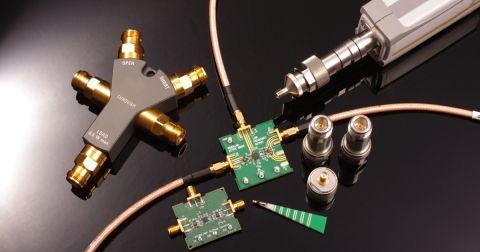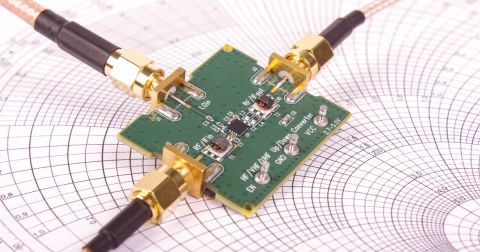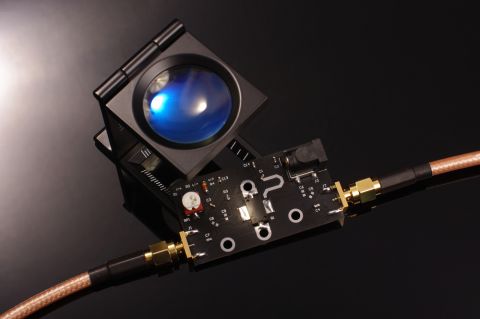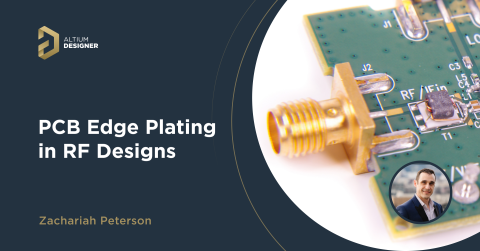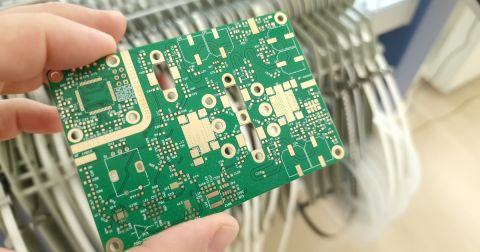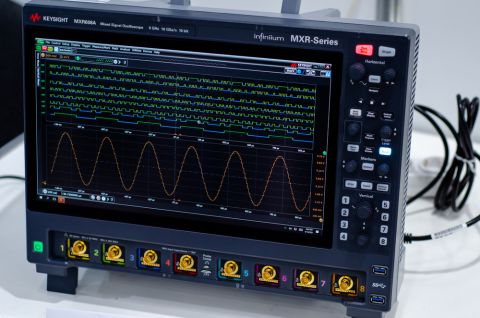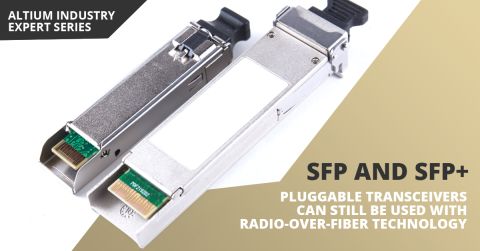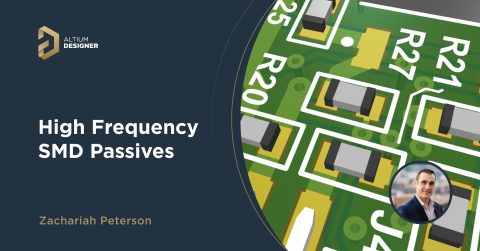Substrate Integrated Waveguide Routing for mmWave PCBs

The applications of mmWave signals used to be confined to defense, but now mmWave systems are becoming more common. You can thank car radar, UAV radar, upcoming rollouts of 5G, and current research on 6G for bringing mmWave technology into the mainstream. Routing with mmWave signals has forced designers to rethink their routing practices and interconnect designs. This has motivated many research groups and innovative companies to design new interconnect structures that provide low loss routing on commercially available PCB substrates.
The grounded coplanar waveguide (and its variants) is probably the most well-known interconnect structure among RF engineers that work with microwave frequencies. One routing structure, called a substrate integrated waveguide, provides a useful alternative that is ideal for engineering the electromagnetic field along an interconnect. Thanks to folks like John Coonrod, this technology is likely to become more popular among RF PCB designers as it offers several advantages over other interconnect designs. Let’s take a look at this unique waveguiding structure and its advantages for mmWave routing.
What is a Substrate Integrated Waveguide?
Imagine an old-style metallic rectangular waveguide, which provides guidance of acoustic or electromagnetic waves through reflection. This simple structure can be implemented on a PCB between two parallel strips of copper. The sidewall’s copper lines are formed from plated through-hole vias, creating a metallic structure that is filled with a dielectric. This type of structure is called a substrate integrated waveguide.
These waveguides are quite simple to form on a PCB; a diagram of an example waveguide is shown below. Here, the interconnect effectively takes up two layers, and a tapered microstrip coupler on the surface layer can be used to inject a signal into this structure.
Substrate integrated waveguide structure
These systems function in a similar way as rectangular waveguides in that they have a set of modes, which is defined by their geometry. Mathematically, the set of eigenfunctions describing the spatial distribution of the electromagnetic field is the same as that used for a typical rectangular waveguide; each eigenfunction has a specific wavenumber and wavelength, which are then combined to form and define the spatial distribution of the field along the waveguide. The approximate wavenumber for a propagating mode is (W and H are the width and height of the structure, respectively):
Propagating wavenumber (approximation) for an equivalent dielectric waveguide.
In the event that the n and m terms are too large, then your signal will not be able to excite a particular mode. This means that the frequency of the signal and geometry of the structure will determine which modes are excited.
Generally, you can excite the TE10 mode simply by sizing the waveguide to accommodate the desired signal frequency; all other higher-order modes will decay and will not propagate through the structure. The wavenumber for the TE10 mode is:

Propagating wavenumber for the TE10 mode. The designer can choose omega, a, W, and d freely in order to select specific modes.
Here, the standard requirement to provide confinement in the waveguide structure is that the via spacing (s) be less than double the via diameter (d), and that a be greater than 5 times the via diameter. Similar conditions can be derived for exciting other modes at a desired frequency. This allows you to engineer the field distribution you need for an antenna, coupler, amplifier/resonator, or other passive RF device.
Advantages of Substrate Integrated Waveguides
The principle advantage of a substrate integrated waveguide is its lower losses compared to microstrips, striplines, and grounded coplanar waveguides. If you’re working in the Ka band or below, microstrips and striplines provide similar losses as grounded coplanar waveguides. Above the Ka band and deep into the V band, grounded coplanar waveguides provide lower losses, although insertion loss still reaches -6 dB and increases by 0.1 dB/GHz beyond 40 GHz. Check out this post from Jon Coonrod for a nice comparison of microstrip, stripline, and grounded coplanar waveguide insertion losses.
Some studies have shown that substrate integrated waveguide interconnects offer lower losses out to 80 GHz on commercially-available low loss substrates (e.g., Rogers, Duroid, or Isola laminates). Insertion loss can reach down to approximately -6 dB in the V band/M band (see here for an example in an experimental 5G network), depending on the via spacing used in the structure. The low losses in these waveguides makes them ideal for use in RF signal chain design, particularly in circuits where high power transmission is critical.
This system is inherently open and can act as a source of radiated EMI into nearby circuits. Providing proper field confinement in these structures requires properly spacing vias along the length of the waveguide, similar to the case of placing a via fence along the border of an antenna region or the edge of a board to suppress cavity resonances.
The ability to choose which modes propagate along the waveguide makes this structure ideal for designing RF multi-port couplers, slotted antennas, and other passive RF structures that rely on interference between modes for field transfer between these structures. If you’re interested in designing your own substrate integrated waveguide, you’ll need to use a 3D electromagnetic field solver, or follow the results presented by others in the literature. For a quick guide on sizing your vias (diameter and spacing), see this article.
You’ll also need the right PCB design software if you want to create a new layout with substrate integrated waveguides. The unique design environment in Altium Designer® allows you to build cutting-edge boards for digital or high frequency RF systems with a range of layout and routing features. Altium Designer also gives you access to a complete set of post-layout simulation tools for signal integrity analysis.
Now you can download a free trial of Altium Designer and learn more about the industry’s best layout, simulation, and production planning tools. Talk to an Altium expert today to learn more.

